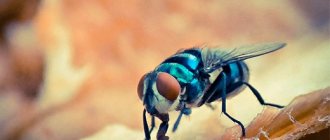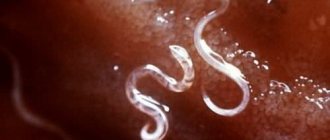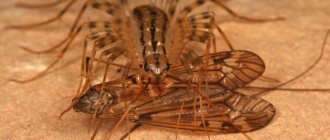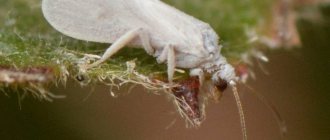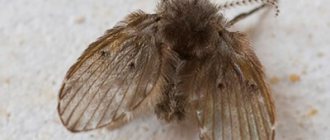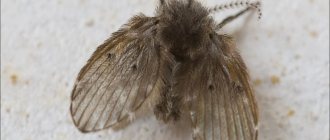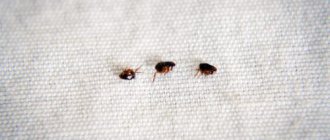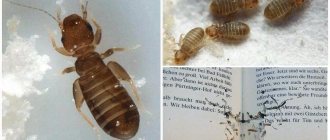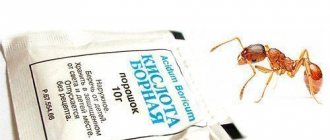Worms are representatives of lower worms that live in the human body. A disease associated with human infection by various types of worms is called helminthiasis. This disease is not uncommon and occurs among certain segments of the population. Children are susceptible to pinworm infection, hunters - trichinella, fishermen and lovers of Japanese cuisine (raw fish in the form of sushi) suffer from diphyllobothriasis. Many diseases, paradoxically, can occur in the human body due to helminthiasis. Today, the theory about the connection between cancer and parasitic infections is one of the most relevant. In the presence of helminthiasis, symptoms do not always appear, and if, nevertheless, patients with this disease experience any unpleasant and uncomfortable sensations, they are perceived as signs of other diseases. The patient has been treated for years for pancreatitis, gastritis or colitis, not suspecting that the cause of his ailments is helminthiasis.
How does infection occur?
Worms bring a lot of trouble to humans
Infection with helminths occurs as follows:
- Through unwashed hands
- Upon contact with soil
- After insect bites
- Because of dirty hands
- When eating raw meat and fish
- After eating unwashed fruits and vegetables
- After contact with an animal
- After contact with infected people
Mature parasite eggs can be found in soil, water, and food (raw and lightly cooked meat or fish). Rare cases of the disease occur due to insect bites. The mechanism of infection by helminthiasis is oral-fecal. A person swallows parasite eggs with food and water. Contact and household methods of infection also occur. They happen when, after contact with soil or sand, hands were not thoroughly washed.
Vegetables and berries growing in the ground that are not sufficiently washed are also a source of worm infection. Children who play with yard and domestic animals are at risk of contracting worms. Pets that roam freely on the streets can bring helminth eggs into the house. Flies and other insects, after contact with animal feces, landing on food, can easily transfer helminth eggs. Surprisingly, infection from person to person is also possible. It happens like this: a female pinworm can crawl out of the intestines and lay eggs directly on the underwear, causing severe itching. A person, after scratching an itchy area, may come into contact with other toilet items and household items. These items fall into the hands of other family members, after which they become infected.
Infection through water is also possible. Many parasitic eggs easily fall into open reservoirs and wells. Drinking unboiled well water is extremely dangerous.
Disease prevention
Ophthalmomyasis is a rather rare phenomenon (5% of all human myiases). And yet, knowing what serious consequences it can lead to, it would be useful to remember the rules that will help protect yourself:
- Maintain general and personal hygiene;
- If there are grounds for concern, immediately consult a doctor to take preventive measures or prescribe treatment;
- Destroy insects that carry infection;
- Use protective agents (creams, ointments) that will prevent parasites from penetrating the skin.
In the medical department, everyone can undergo examination using the most modern diagnostic equipment, and based on the results, receive advice from a highly qualified specialist. We are open seven days a week and work daily from 9 a.m. to 9 p.m. Our specialists will help identify the cause of vision loss and provide competent treatment for identified pathologies.
You can find out the cost of a particular procedure or make an appointment at the Moscow Eye Clinic by calling 8 and 8 (499) 322-36-36 (daily from 9:00 to 21:00) or using the online registration form .
Stages of helminthiasis
In most cases, infection occurs due to poor hygiene
The most destructive effect on the body is not caused by adults, but by their larvae. Adult individuals have already chosen a cozy place for themselves in the human body, and the larva travels through the organs and leaves behind their lesions. The most common habitat of parasites is the gastrointestinal tract. Different types of parasites prefer different habitats. So roundworms are located in the small intestine, and pinworms settle in the large intestine and lower parts of the small intestine. According to the habitat of the parasites, helminth infections are:
- Translucent
- Fabric
Luminal ones are located in the lumens of the genital organs, and tissue ones are located inside the tissues. Depending on their growth, parasites can change their habitat, moving from the luminal form to the tissue form. Helminthiasis develops in two stages:
When to contact a veterinarian
A small amount of maggots on the dog’s body can be removed by the owner himself by treating the affected area with one of the above mentioned products. However, for serious wounds, with severe intoxication of the body and elevated body temperature for more than a day, it is better to contact a veterinary clinic. The problem is probably more serious than you think, so it is worth conducting a comprehensive examination of your pet.
The doctor will thoroughly clean the affected areas and prescribe effective treatment to eliminate any worms remaining in the fur or skin (antiparasitic agents are used). The longer maggots remain on the pet’s body, the greater the likelihood of severe tissue damage and increased intoxication in the dog’s body. This is especially true for gadfly larvae, which remain invisible for a long time under the top layer of skin (they are removed surgically).
Classification of helminths
Roundworms are quite common
Types of worms in humans:
- Flatworms
- Roundworms
Flatworms include:
- Trematodes (opisthorchiasis, schistosomes, paragonimus)
- Cestodes (wide tapeworm, pork tapeworm, echinococcus, alveococcus)
- Roundworms or nematodes:
- Pinworm
- Ascaris
- Hookworm
- Trichinella
This classification of helminths is presented in the medical literature. To successfully solve a problem such as helminthiasis, it is necessary to find out in-depth characteristics of the structure and life cycle of parasites.
Trematodes
Another name for trematodes is flukes. These parasites are flat leaf-shaped or lanceolate with two suckers. One sucker is located in the mouth, and the second, which serves for attachment, is in the peritoneum. All representatives of flukes enter the body through an intermediate host. Most of these parasites are hermaphrodites.
Opisthorchiasis
This is a fluke - a worm up to 1.3 cm long with two suckers. Opisthorchiasis is a hermaphrodite that parasitizes the liver, gall bladder, and pancreas in humans and some carnivorous animals (foxes, dogs, cats). Opisthorchiasis eggs come out of the human or animal body in feces. When these eggs enter a body of water, they are swallowed by freshwater mollusks, within which the larvae hatch and develop. The process of development and maturation of larvae lasts two months. Then the larvae crawl out of the mollusk and penetrate the skin of carp fish. After six weeks, the larvae become full-fledged mature parasites. Opisthorchiasis enters the animal or human body after eating contaminated fish. This worm can live in a living organism for up to 20 years. Symptoms of opisthorchiasis:
- Allergy
- Weakness
- Headache
- Dizziness
- Depression
- Loss of consciousness
Harm caused to the body by opisthorchiasis:
- Poisoning by parasite waste products
- Damage to liver tissue
- Gallbladder damage
- Impaired outflow of bile
- Inflammation of the pancreas
- Secretory dysfunction
- Decreased gastric motility
- Thickening of the walls of some organs, the occurrence of tumors as a result.
The chronic course of the disease is characterized by:
Methods for treating myiasis
The main method of treating this disease is surgical removal of the parasite, its waste products and necrotic tissue.
With external ophthalmomyasis, surgical tweezers are usually sufficient to remove the larva. For internal ophthalmomyasis, specialists usually use vitrectomy or destroy the parasite using photocoagulation.
If symptoms of a secondary bacterial infection are detected in the patient, a course of antibiotics, corticosteroids, and sulfa drugs is prescribed in the postoperative period. Detoxification agents are used.
Is it worth calling a doctor to your home to get help on how to remove maggots from a dog?
A doctor's visit to your home will help save a lot of time, which can be spent usefully, for example, examining the animal's rear hole for cleanliness. You should also carefully prepare for the doctor’s visit. Prepare a clean towel, wet wipes, and a large, wide surface covered with a sterile sheet. When the doctor arrives, you should remain calm and not panic. Dogs are excellent psychologists and they detect the slightest change in their owner’s mood. Panic is also easily transmitted to them, and an agitated animal is quite difficult to examine. Which doctor should I call? First of all, you should invite a veterinarian who will conduct a general examination of the animal. By agreement with the owner, a dermatologist from our veterinary center will be sent.
If you use such a convenient service as a veterinarian at home at least once, you will no longer want to come to the veterinary center on your own.
Are maggots useful?
The positive effects of worms on trophic and purulent infected wounds have been clinically proven.
Blowfly larvae eat decaying tissue. Their digestive system has external development. Once in the wound, they release proteolytic enzymes that help dissolve dead cells. Natural cleansing of necrotizing lesions occurs. The use of maggots can be compared to surgical practice, where pancreatic enzymes are used. Trypsin is placed into the pathological focus, which cleanses the wounds of purulent contents. The main advantage of larval therapy is its rapid and long-term effect.
Scientists are developing an antibiotic that can help with non-drug cases, gangrene. The substance isolated from the processed secretion of green fly larvae was named Seraticin. It has shown effectiveness in the treatment of diseases caused by E. coli, staphylococci, and clostridia.
Another positive effect of maggots on a wound is the suppression of local immunity. The increased protective reaction of the skin causes typical symptoms of inflammation. The patient suffers from swelling and pain. Thanks to mucus, the larvae relieve swelling, reduce hyperemia, and fight pain.
The therapeutic effect of worms is manifested in many difficult situations: bedsores, non-healing trophic ulcers associated with metabolic disorders in diabetes, poor circulation of the lower extremities, atherosclerosis, improper functioning of the nervous system, various types of polyneuropathy. The main use of blowfly maggots on a wound is the fight against dry and wet gangrene. Antibiotics are often powerless against suppurative processes on the extremities. Gangrene can only be treated surgically. Larval therapy will help preserve the limb if used in a timely manner.
Medical point of view on larval therapy
The opinion of doctors regarding the non-standard method of treatment is ambiguous. Some doctors talk about additional infection of the wound, emphasizing that the procedure is painful and the patient receives new unpleasant sensations.
Adherents of alternative medicine support the old method of treatment with maggots. Important advantages of larval therapy:
- Maggots get rid of areas of necrosis and rotting. Worms do not eat healthy tissue. They cleanse the skin of dead epithelial cells.
- Blowfly larvae reduce the activity of pathogenic microorganisms inside the wound. They prevent the spread of infection to underlying structures and through the bloodstream.
- Maggots stimulate reparative processes in the pathological area of the body. Due to allantoin, a secretion of the larvae, the integrity of the skin is restored.
Not everyone can agree to the procedure. White worms in a wound are an unpleasant sight that evokes negative emotions. Patients must understand that no amount of antimicrobial drugs can do the same as maggot therapy. Hopeless cases are treated with maggots in 2-3 days. The larvae gnaw out necrotic lesions, the skin recovers faster.
If the doctor suggests an unconventional method, it is better to agree.
Why do random and facultative myiases occur?
The main cause of these types of disease is common unsanitary conditions. Neglect of personal hygiene and room cleanliness leads to the proliferation of flies, which sooner or later will lay eggs on humans.
Obligate myiases
Caused by flies that initially parasitize warm-blooded organisms. Their other name is gadflies. The reproductive cycle of different individuals may include parasitism of maggots in the stomach, nasal sinuses, or skin.
The gastric botfly attaches eggs to the forelimbs of herbivores. When an animal scratches its leg, it inadvertently ingests eggs, which begin to develop in the gastrointestinal tract. Gastric botfly eggs do not die in the intestines, but humans have little chance of becoming infected with these parasites. The disease is treated with routine deworming of animals. Standard anthelmintic drugs also help a person.
The subcutaneous gadfly usually also attacks large herbivores, laying 1 egg per hair. It does not have a specific point of attachment for the egg. The hatched larva burrows into the skin and begins feeding on the host's flesh. Before moving to the second stage of development, it lays a subcutaneous path to the area of the animal’s back, where it forms a nodule with an opening for air.
The subcutaneous gadfly can lay eggs on humans. In this case, the larvae begin their instinctive upward movement, emerging not on the back, but towards the head of the owner.
Important!
There are known cases of this species penetrating the human brain with fatal consequences.
Subcutaneous myiasis
The main cause of this disease is the larvae of subcutaneous gadflies. Signs of subcutaneous myiasis in humans are red swellings with a hole in the middle. The activity of the larva causes pain to the owner.
Subcutaneous myiasis
To remove parasites, first cover the breathing hole with an airtight bandage. In an attempt to breathe, the larva pokes its head into the hole. A day later, the patch is removed, the emerging larva is grabbed with tweezers and carefully pulled out. This procedure is performed only on humans. The animals' nodules are simply opened.
Nasopharyngeal gadflies
These types of parasites are viviparous. They do not lay eggs, but inject ready-made live larvae into the nostrils, mouth and eyes of animals and humans. Once on the mucous membranes, the parasites invade the victim’s body, causing cavitary myiases in the nose and damage to the eyes and mucous membranes of the mouth. Localization of the offspring of the nasopharyngeal gadfly occurs in the frontal and nasal cavities, pharynx, and ethmoid bone. These same larvae parasitize the mucous membranes of the eyes and mouth and penetrate the eyeballs.
Development cycle
The female flies up to the future “incubator” and literally injects the larvae into the affected area of the skin.
Each “injection” contains at least 10-15 individuals. The larvae quickly burrow into the wound, actively feed and molt twice. After about five days (depending on the ambient temperature), they crawl out of their cozy nest, fall onto the soil, burrow into it, and pupate. After one to three weeks, the imago (that is, the adult stage) emerges.
Adult flies are most active at an ambient temperature of 20-27 degrees Celsius. If it gets hotter, they find shade and fall into a kind of torpor.
Random
The diseases are caused by flies that usually lay eggs in rotting organic matter. A person becomes infected with these larvae accidentally by ingesting them in food or wearing underwear. For the most part, eggs swallowed by a person are dissolved by gastric juice, but sometimes maggots can penetrate the intestines, causing intestinal myiasis. If a fly lays eggs on wet laundry, the larva can penetrate the urethra, causing genitourinary myiasis.
Occasional cavitary myiases are caused by many flies:
- blue meat (Calliphora vicina);
- indoor (Musca domestica);
- green meat (Lucilla sericata);
- brownie (Muscina stabulans);
- small indoor (Fannia canicularis);
- fruit flies (family Drosophilidae);
- cheese (Piophila casei).
These are not the only, but the main types of flies that infect humans.
Interesting!
A person usually causes intestinal myiasis with cheese fly larvae by eating a dubious delicacy: rotten cheese infected with cheese flies.
Accidental myiasis
